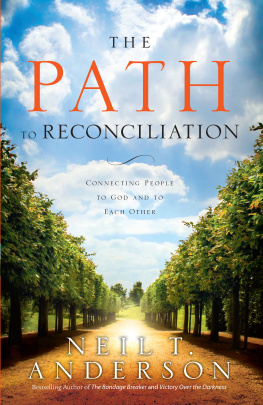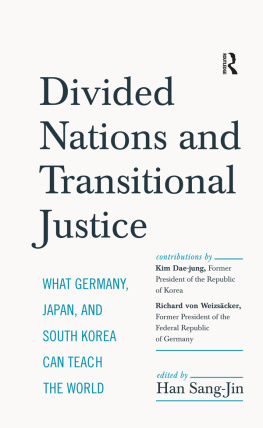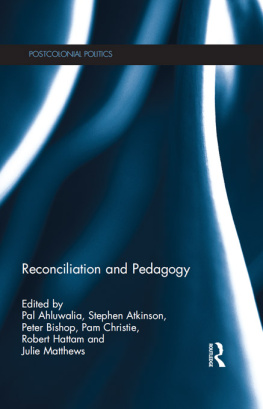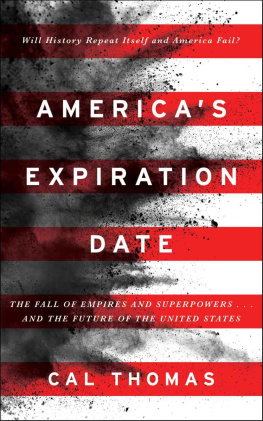Praise for The Divided Era
In the tradition of historians Will and Ariel Durant in The Story of Civilization, Tom Del Beccaro dramatically relates the ideological and political struggles of earlier eras to the clashes of today. In bringing to life the incendiary politics of eras such as The Gilded Agewith high voter-turnout (80 percent nationwide in the 1880s), the rise of third parties, and hard-fought presidential electionsMr. Del Beccaro helps us better understand the negativism of politics today.
John Gizzi, White House Correspondent for over thirty years, Political Columnist for Newsmax
The Divided Era demonstrates clearly how our income tax code today not only isnt the best way to raise revenue, but is also fueling divisions among Americansmuch like the tariff system did in the 1800s. If we want to get beyond class warfare, we simply must return to economic growth, as Del Beccaro points out.
Stephen Moore, Head Economist for The Heritage Foundation
How partisan are we, really? The Divided Era not only answers that question, it also places our political differences in historical context. It turns the tables on those who blame partisanship on political participants fighting in the arena for spoils or rights. The Divided Era is a compelling and easy read, asserting that government actionpicking winners and losersis the primary cause of our current political division.
James P. Pinkerton, Fox News Personality
The Divided Era demonstrates, in exhaustively researched and rich detail, how ever more complicated laws and government are driving us apart, not solving our problems.
Anne Bremner, Nationally Recognized Legal Analyst
Americans seem increasingly and disturbingly partisanwedded to the oftentimes inconsistent and interest-group-driven ideologies of the nations two major parties. Thats true even as the Republicans and Democrats offer fewer sensible answers to the nations most-pressing questions. Tom Del Beccaro pins the blame squarely where it belongs: on the growth of government. As long as Americans keep fighting each other rather than banding together to fight the growth of bureaucracy and government power, they are destined to remain in this divided era. Del Beccaros book offers some fresh thinking on the matter.
Steven Greenhut, California Columnist, U-T San Diego
For nine years, Tom Del Beccaro has provided unique insight to my radio audience. With The Divided Era, Tom continues his great work. The sources of the current scandals in Washington, along with government overreach, are not only highlighted by this work, but The Divided Era also makes it clear that government has been the source of many of our historical divisions. The Divided Era helps us understand our times and why they will be difficult to change. Tom also provides us with a look forward to how we can bridge our partisan gaps.
Mark Larson, Talk Radio Host, KCBQ


Published by Greenleaf Book Group Press
Austin, Texas
www.gbgpress.com
Copyright 2015 Thomas Del Beccaro
All rights reserved.
No part of this book may be reproduced, stored in a retrieval system, or transmitted by any means, electronic, mechanical, photocopying, recording, or otherwise, without written permission from the copyright holder.
Distributed by Greenleaf Book Group
For ordering information or special discounts for bulk purchases, please contact Greenleaf Book Group at PO Box 91869, Austin, TX 78709, 512.891.6100.
Design and composition by Greenleaf Book Group
Cover design by Greenleaf Book Group
Cover image: shutterstock/jocic
Ebook ISBN: 978-1-62634-200-2
Ebook Edition
Contents
To the memory of my Father, who put the first history books in my hand, and to my Mother for teaching me perseverance among so many other gifts.
To my daughter, Juliana, for whom this book is a drop in her ocean of desire to learn.
Preface
Why is there so much fighting in politics today?
I spent five years writing The Divided Era in response to that simple and direct question from a friend of minealthough the study of history and politics has been a passion of mine for decades. Laura Cox is a mother of two, an owner of a small business, and a community volunteer. She is not a partisan and, in her busy world, follows politics only sparingly. She wanted to know, as many others do, why there is so much fighting in American politics today. It certainly was not the first time I had heard the question, but I thought it was time for me to answer it in detail. The Divided Era is the result.
We can start by recognizing that partisanship and political fighting are not new to our time or place. They are at least as old as government itself. At their core is human nature. We are and have been acquisitive, territorial, and competitive since our origins. We are associative as well, and, over time, we come together as a family, a group, a clan, a town, a city, a state, and a nation. Along the way we come to grips with governing ourselves, and governing necessarily implies choices.
Among the first governing choices is determining who will be in charge. At the beginning of most civilizations, that choice is often made by force. Later on, if the right conditions develop, choices are made by the more cooperative but complex rubric of the ballotand so it has been for America.
In the hands of a monarch or a despot, the choices made by government tend to be limited and concentrated among a few. Dissent or partisanship among the governed, under such circumstances, carries with it the risk of imprisonment or worse. Nevertheless, if it emerges to a sufficient degree, it can be rebelliousas in the case of the founding of our country.
Democracies, by contrast, feature a more populated governing class. At first, relatively few officials are elected under a comparatively simple charter. Over time, the number of elected grows, the governments become increasingly bureaucratic, and their charters become more complex. In the process, they tend toward a proliferation of choices.
Whenever and wherever the freedom of political choice exists, competitions naturally develop. They are competitions not just among those making the basic choice (i.e., voters) but also among those who want to exercise power (i.e., parties and politicians). As governments grow, those competitions intensify and increase. A different type of competition also arisesa competition among those seeking the favors and spoils of government. That is where we are today, and that is the central focus of this book.
To understand our current divisions, The Divided Era considers the three most divisive periods in our history: the time from just before our Revolution through the adoption of our Constitution; the period after Lincolns election, known as the Secession Crisis, in conjunction with Reconstructionthe period that followed our Civil War; and finally, the Gilded Agethe name given to the closing decades of the 1800s. We can then contrast those periods with our two most unifying periods: George Washingtons success as President, which we can call Washingtons Unifying Moment, and the Era of Good Feelings, when James Monroe ran unopposed for president. I also include lessons from Ronald Reagan and John F. Kennedy about rising above partisan troubles.













